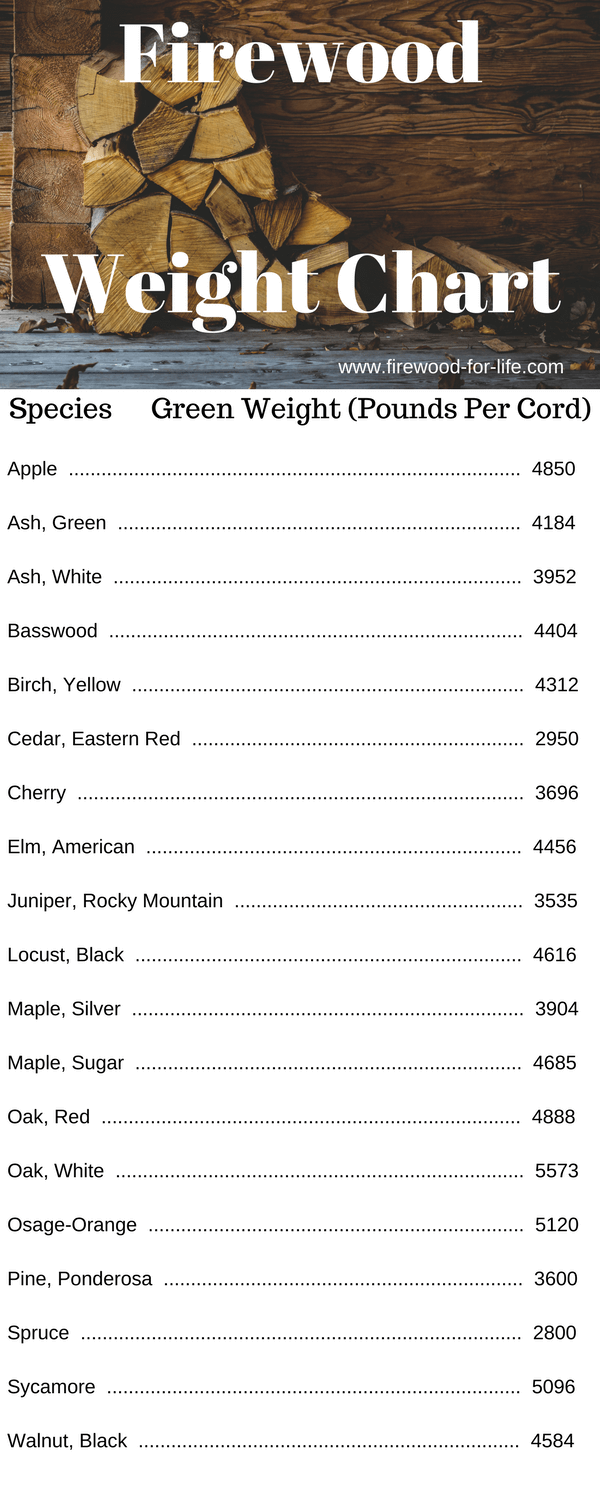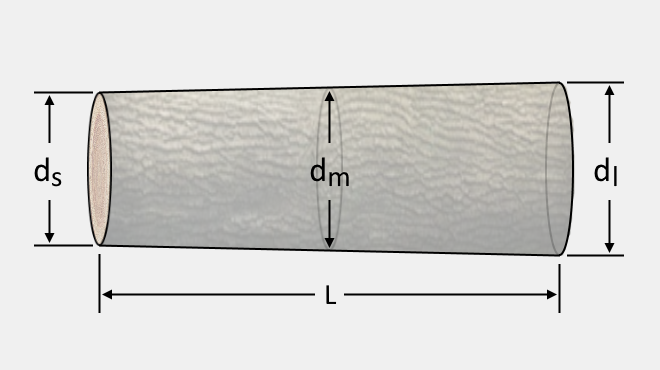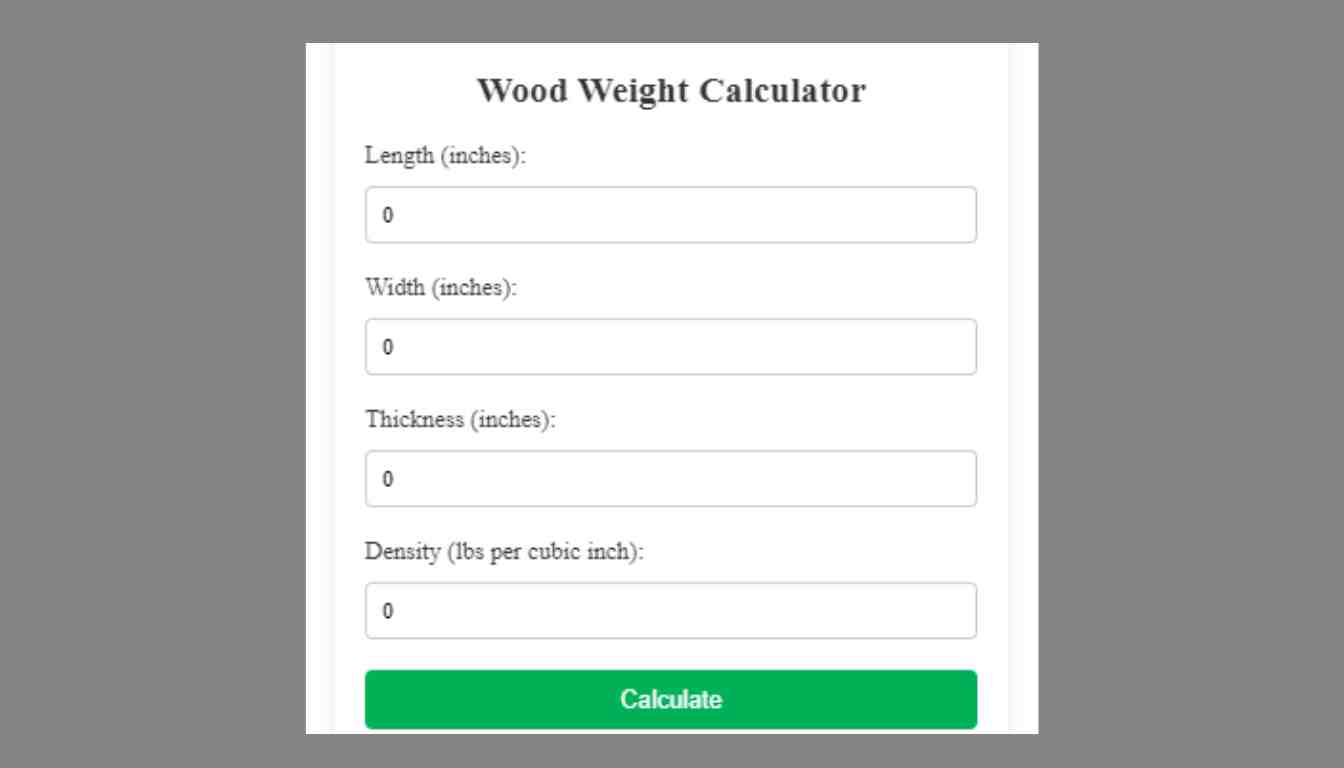A Wood Weight Calculator estimates the weight of lumber or wood based on species and volume. Users input dimensions and wood types for accurate calculations.
Determining the right amount of wood for a project or calculating shipping costs requires an understanding of wood weight. Commercial and DIY projects alike benefit from a Wood Weight Calculator that factors in density and moisture content—key elements affecting wood’s weight.
Ideal for carpenters, woodworkers, and logistical planning, this tool simplifies the estimation process. Avoid the guesswork and ensure precise material planning with a Wood Weight Calculator. It streamlines the design and transportation phases, allowing for effective budgeting and project management. Embrace the convenience of this digital solution to make informed decisions related to wood-based construction and crafts.

Credit: support.cratepro.com
Wood Weight Fundamentals
Do you work with wood for DIY projects or construction? Knowing how much wood weighs helps plan your work. Different wood types have different weights. A wood weight calculator makes this easy. Now, let’s learn about key factors that affect wood weight.
The Density Factor
Wood density is crucial. It means how tight wood fibers are packed. Dense wood weighs more than less dense wood. Different trees have different densities. This affects how heavy wood is. Always check density to guess weight right.
- Softwoods like pine are less dense, so they are lighter.
- Hardwoods like oak are denser and hence heavier.
From Volume To Weight
To find wood weight, measure volume first. Volume is width times height times length. Then, multiply volume by wood density. That will tell you the weight. Use a calculator to do this fast and without mistakes.
| Step | Action |
|---|---|
| 1 | Measure wood dimensions. |
| 2 | Calculate volume. |
| 3 | Multiply by density. |
Remember to use the same units when calculating. Changing from inches to feet can make a big difference! Tools like wood weight calculators automatically convert units for accurate results.

Credit: www.firewood-for-life.com
Types Of Wood And Their Weights
When embarking on a woodworking project, knowing the weight of your material is key. Different types of wood vary not only in color and texture but also in weight. Enter the innovative world of the Wood Weight Calculator, a handy tool that helps estimate the weight of different wood types. Let’s dive into the types of wood and how their weights differ — a crucial factor for builders, DIY enthusiasts, and professionals alike.
Hardwood Versus Softwood
Wood falls into two main categories: hardwood and softwood. Understanding this difference is vital.
- Hardwoods, like oak and maple, come from deciduous trees. They usually grow slower. This makes them denser and heavier.
- Softwoods, from coniferous trees such as pine and cedar, grow faster. They are lighter and easier to work with.
This distinction affects the weight calculations greatly, influencing the choice of wood for your project.
Common Species And Their Densities
Each wood species has a unique density, determining its weight. See this table for popular types:
| Wood Species | Density (lbs/ft3) |
|---|---|
| Oak | 45-63 |
| Maple | 30-45 |
| Pine | 22-35 |
| Cedar | 23 |
| Birch | 38-43 |
Note that these densities are averages. Actual weights can vary based on moisture content and specific species variations.
The Essentials Of A Wood Weight Calculator
The Essentials of a Wood Weight Calculator play a pivotal role for professionals in woodworking, carpentry, and construction. These calculators provide valuable assistance in planning and logistics. They can foresee the weight of wood before purchase or use. Understanding the weight helps in determining transport requirements, cost estimation, and structural support considerations.
Input Parameters
To effectively use a Wood Weight Calculator, users must input specific data accurately. These parameters help the calculator provide reliable results.
- Type of Wood: Different woods have different densities.
- Volume of Wood: Measured in cubic feet, meters, or other units.
- Moisture Content: Wet wood weighs more than dry wood.
Calculators may also request additional details like the wood’s dimensions which include length, width, and thickness.
Understanding Output
The output from a Wood Weight Calculator offers insights beyond mere numbers. It shapes decision-making across multiple stages of a project.
| Output Parameter | Significance |
|---|---|
| Total Weight | This figure is crucial for handling and transportation. |
| Weight per Unit | Helps in quick estimations of load per piece. |
By understanding the output, users can strategize effectively, ensure safety measures, and optimize resource management.

Credit: sherrilltree.com
Practical Applications For Wood Weight Calculations
Knowing the weight of wood serves vital functions across various industries.
From construction to logistics, accurate wood weight calculations ensure efficiency and cost-effectiveness.
Let’s explore some key areas where a wood weight calculator becomes a game-changer.
Construction Projects Needs
In construction, precision is everything.
Builders and architects rely on the wood weight for:
- Structural integrity: Ensuring buildings can support the weight.
- Material selection: Choosing the right wood for specific parts of a structure.
- Safety regulations: Complying with local building codes.
Weight calculations help in making critical decisions during project planning.
Shipping And Logistics
Accurately calculated wood weight aids in:
- Transport arrangements: Arranging the right vehicles and routes.
- Load optimization: Maximizing cargo space without exceeding limits.
- Cost control: Avoiding unnecessary shipping charges.
Logistics teams depend on these calculations for seamless transport experiences.
Budgeting And Cost Estimates
For businesses, keeping an eye on the budget is crucial.
| Consideration | Impact |
|---|---|
| Material cost | Wood weight can influence buying decisions. |
| Waste management | Reducing wood waste saves money. |
| Project bids | Precise estimates win contracts. |
Knowing the wood’s weight helps in drafting precise budget estimations.
Building Your Own Wood Weight Calculator
Embarking on the journey to create a personalized Wood Weight Calculator can streamline your woodworking projects. This tool helps you estimate the weight of various wood types based on their volume and density. Follow these steps to build a calculator tailored to your needs.
Choosing The Right Software
The foundation of a robust Wood Weight Calculator is the software you choose. Options include:
- Spreadsheets: Excel or Google Sheets offer formulas to calculate weight.
- Programming Languages: JavaScript or Python for web-based calculators.
Select a platform that matches your skill level and the calculator’s complexity.
Accuracy And Error Margin
Determining your calculator’s precision is crucial for reliable results. Consider these factors:
- The type of wood, as density varies.
- Moisture content, which impacts weight.
Strive for an error margin that is acceptable for your specific applications. Test your calculator with known weights to ensure its accuracy.
User-friendly Interface Design
A successful Wood Weight Calculator must be easy to use. Achieve this by:
- Keeping the design clean and simple.
- Providing clear instructions for users.
- Including a straightforward input method for dimensions and wood type.
Test your interface with users who are unfamiliar with the tool to guarantee intuitiveness.
Advantages Of Using A Wood Weight Calculator
When working with wood, knowing its weight is crucial. It affects shipping costs, structural support, and handling. A Wood Weight Calculator simplifies this. It calculates the weight of different wood types and sizes with ease. Let’s explore how such a tool can make woodworking projects more efficient.
Time And Resource Efficiency
The use of a Wood Weight Calculator saves time. Manually estimating wood weight can be time-consuming. This tool quickly gives accurate results. It eliminates guesswork, allowing you to focus on other aspects of your project.
- Quick calculations – Get results in seconds.
- Less manpower – Reduce the need for manual calculations.
- Increased productivity – More time for other tasks.
Enhanced Precision
Accuracy in weight calculation ensures the right material selection. It prevents structural failures due to incorrect weight estimations. With a Wood Weight Calculator, you get precise measurements every time.
- Detailed results minimize errors.
- Improved decision-making on wood choice.
- Confidence in structural integrity with accurate weight data.
Versatility In Application
Wood Weight Calculators can handle various applications. Whether for construction, carpentry, or crafting, they provide valuable data. They work with different wood species and dimensions.
| Application | Benefits |
|---|---|
| Construction | Supports material logistics and planning. |
| Carpentry | Guides in furniture design and weight limits. |
| Crafting | Helps in the creation of stable, balanced pieces. |
Frequently Asked Questions Of Wood Weight Calculator
How Do You Calculate The Weight Of Wood?
To calculate the weight of wood, multiply its volume by its density. Use a wood density chart for accurate measurements.
How Do You Calculate The Weight Of A Tree?
To calculate a tree’s weight, measure its diameter and height, and use species-specific wood density figures along with mathematical volume formulas.
How Much Does A 2×4 Weigh?
A 2×4 lumber’s weight varies by its moisture content; typically, a dry 2×4 weighs around 9-17 pounds per 8-foot length.
How Do You Weigh Lumber?
To weigh lumber, use a lumber scale that corresponds to the wood’s species and moisture content. Place the lumber on a calibrated industrial scale, ensuring it’s evenly distributed for an accurate weight result. Record the weight as displayed on the scale’s readout.
Conclusion
Calculating wood weight is essential for numerous projects. Our guide simplifies this task with an easy-to-use calculator. Remember, accurate estimates lead to better planning and cost management. Utilize this tool to ensure your woodworking projects success. Let’s start calculating and crafting with confidence today!


